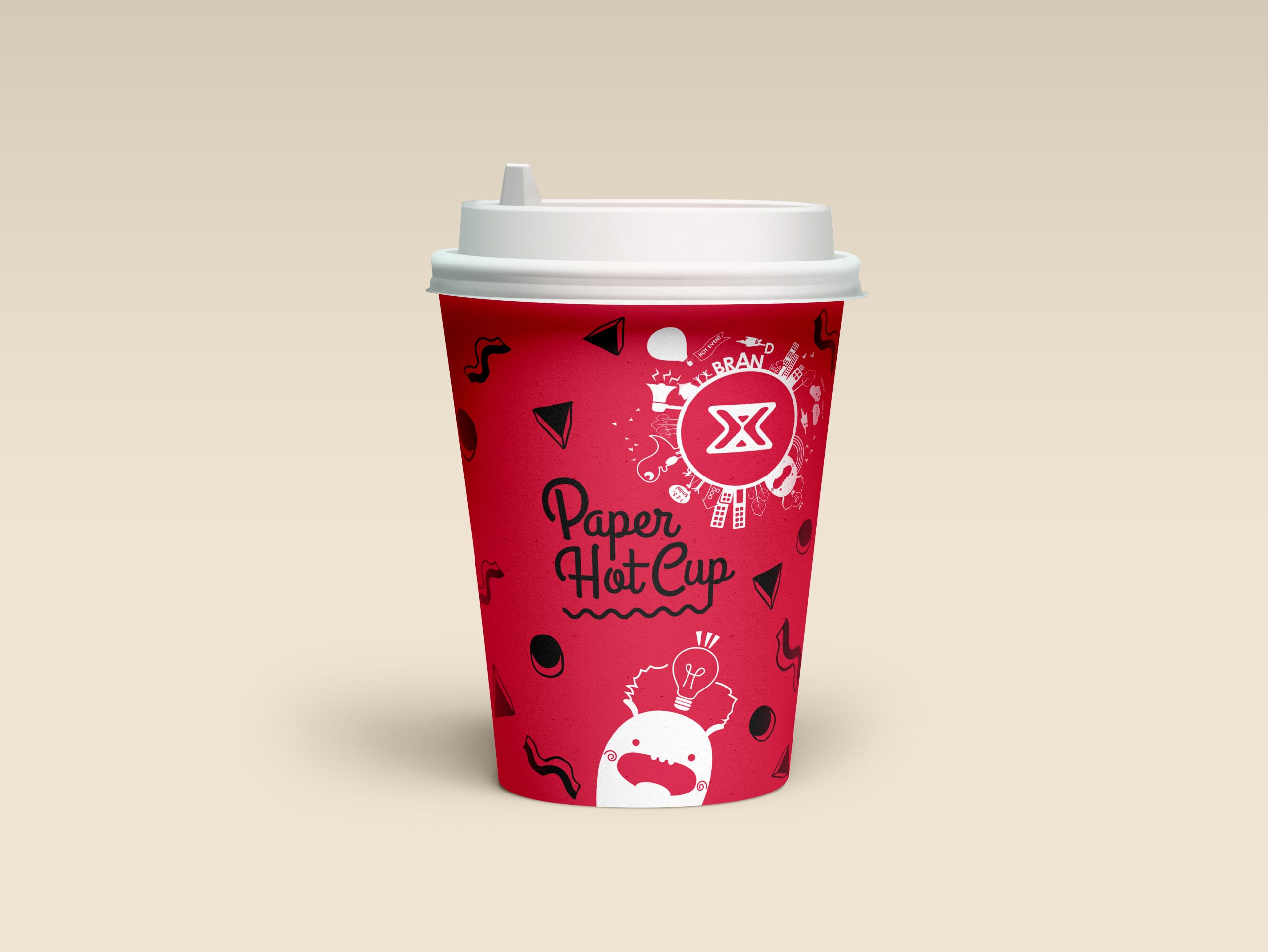
In this case, we also recommend creating a new image layer and adjusting the edges of the image to fit the pattern. This approach is also used when positioning images. Finally, the text must feature the same curvature as the provided grid pattern to ensure that the printing results appear optically correct and linear. 
Ideally elements need to be arched so envelope distortion matches horizontal and vertical lines of the grid.
 Use our gridlines to adjust elements using warping effect in Illustrator to make elements appear straight on the cup. This is due to uncoated paper which ‘soaks’ in some of the ink. Line thicknesses below 0.5pt might differ from screen appearance, especially on matt finish cups with dark backgrounds and bright graphic elements. If it’s not readable when you print it on your printer, it won’t be on the cup. Please take care with small imprints and symbols like: © ® and ™. Text 6pt and below might not be legible. READ ABOUT CUP PRINTING FINISHES Small Text Sizes and Tiny Elements To print black we advise using K100% only, additionally to achieve deep black Cyan boost between 40-60% can be used. Black mixes using all 4 Process Colors are not recommended as they might print as dark brown due to high ink coverage. If a designer created your brand and logo, you should ask for vector master files so you can produce a wide range of versions for a range of use for signage, advertising and of course branded paper cups!Ī post shared by CupPrint on at 12:03am PST Vector files – Adobe Illustrator (AI), EPS and the right types of PDF can be more easily manipulated, resized and colour corrected while maintaining higher resolution for a better quality appearance in print. I recommend vector all the way as it gives more flexibility in color corrections. Rasterised logos are a common issue we encounter. Pastel and Neon color palettes are a couple more examples. Please be aware that some spot colors cannot include our usual food safe inks. The colors with the most discrepancies to be aware of are bright oranges – such as PMS 021. But there are some colors to watch out for. For the most part this is very accurate. We convert all Pantone references to the CMYK version of this reference using up-to-date Pantone Color Bridges Books. If you have specific Pantone references for your brand, no problem. This process is great for accurate representation of photos and graphics. Our main printing process used for printing cups is high resolution full color process CMYK. Avoid RGB or spot colors when not needed.
Use our gridlines to adjust elements using warping effect in Illustrator to make elements appear straight on the cup. This is due to uncoated paper which ‘soaks’ in some of the ink. Line thicknesses below 0.5pt might differ from screen appearance, especially on matt finish cups with dark backgrounds and bright graphic elements. If it’s not readable when you print it on your printer, it won’t be on the cup. Please take care with small imprints and symbols like: © ® and ™. Text 6pt and below might not be legible. READ ABOUT CUP PRINTING FINISHES Small Text Sizes and Tiny Elements To print black we advise using K100% only, additionally to achieve deep black Cyan boost between 40-60% can be used. Black mixes using all 4 Process Colors are not recommended as they might print as dark brown due to high ink coverage. If a designer created your brand and logo, you should ask for vector master files so you can produce a wide range of versions for a range of use for signage, advertising and of course branded paper cups!Ī post shared by CupPrint on at 12:03am PST Vector files – Adobe Illustrator (AI), EPS and the right types of PDF can be more easily manipulated, resized and colour corrected while maintaining higher resolution for a better quality appearance in print. I recommend vector all the way as it gives more flexibility in color corrections. Rasterised logos are a common issue we encounter. Pastel and Neon color palettes are a couple more examples. Please be aware that some spot colors cannot include our usual food safe inks. The colors with the most discrepancies to be aware of are bright oranges – such as PMS 021. But there are some colors to watch out for. For the most part this is very accurate. We convert all Pantone references to the CMYK version of this reference using up-to-date Pantone Color Bridges Books. If you have specific Pantone references for your brand, no problem. This process is great for accurate representation of photos and graphics. Our main printing process used for printing cups is high resolution full color process CMYK. Avoid RGB or spot colors when not needed. 
A post shared by CupPrint on at 1:39am PSTĬHECK GALLERY FOR INSPIRATION Paper Cup Printing Color Model










